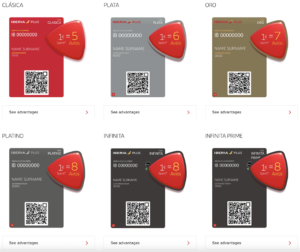We hope you like a free continental breakfast because the hotels that serve them are taking over the U.S. hotel development pipeline.
IHG’s Holiday Inn Express has long been a leader in the affordably priced midscale space, but in recent years, Hilton’s Home2 Suites has throttled to the lead position thanks to the number of hotels the brand has in the works.
Home2 Suites was the hotel brand out of any pricing sector with the most properties in various stages of development in the U.S. at the end of the first quarter of this year, according to Lodging Econometrics. The upper midscale chain, which launched in 2009, has roughly 56,000 rooms in development across 546 hotel projects.
One of its top competitors, Marriott’s TownePlace Suites, comes in second place with about 31,000 rooms across 333 hotels in various stages of development. Holiday Inn Express rounds out the top three with a little more than 28,300 rooms across 301 hotels in various stages of development.
Combined, the three affordable brands represent 21% of the total U.S. hotel construction pipeline at the end of March. It’s an all-time high for construction and development activity for Home2 Suites and TownePlace Suites and signals the durability of developer and travel interest in Holiday Inn Express, which has been around since 1990.
It also says a lot about how much interest there is in more budget-friendly brands. While hotel executives often boast of their expansion into the lucrative luxury and lifestyle hotel sectors, it appears the more affordable end of the spectrum is the development engine driving growth. What gives?
Look at Hilton’s logic for launching Spark, a new brand the company announced earlier this year that will operate in the so-called “premium economy” segment. Hilton leaders anticipate this will eventually become the company’s biggest brand by overall hotel count.
“There are 70 million or 80 million people traveling in this segment, half of whom are younger people that travel and this is all they can afford,” Hilton CEO Christopher Nassetta said on an investor call late last month. “While we serve some of them, we’re not serving many of them. So, the opportunity is for us to get them hooked on our system early by giving them the best product that they can find in the economy space.”
Long story short: Bring in younger customers early with affordable brands, get them hooked on the loyalty program and grow with them as they get more disposable income to spend at, say, a Conrad or a St. Regis further down the line.
The hotel development barbell
The development trend speaks to analysis in the recent 2023 TPG Travel Trends Report, which noted a barbell effect in hotel development interest centered around the most expensive end of the market with ultra-luxury brands and the more affordable end of the hotel food chain.
Because midscale brands are so much cheaper to build, cater to a wider audience and generally perform well, even in economic downturns, there’s an expectation of more building and more brand launches. Hyatt launched an affordable extended-stay brand, Hyatt Studios, just last week, and Marriott and Hilton each hinted they are working on a respective version of their own.
“The launch of Hyatt Studios is part of our broader strategy of creating a portfolio that is about deepening loyalty, stronger connectivity and more frequent engagement with our members,” Hyatt CEO Mark Hoplamazian said on an investor call Thursday.
On Monday, Marriott closed on Mexico-based City Express, a midscale brand that bumped Marriott’s overall brand count to 31. Anthony Capuano, Marriott’s CEO, indicated the brand fills a gap in the company’s overall offering lineup.
“When we have talked in the past about the breadth of our portfolio, we’ve often responded to questions by saying we love the breadth of that portfolio for the way in which it satisfies the wants and needs of both our guests and our owners and franchisees,” he said on an investor call this week. “Midscale is a tier where we hear demands from both of those constituents.”
It might be a head-scratcher for some wondering why these companies, many of which long touted their primary focus on higher-paying travelers, are shifting more to a budget focus.
But think of it more like this: They already have the luxury bases covered. There’s nothing left to grow with except the more budget-friendly end of the hotel spectrum.
Related reading:
- The award traveler’s guide to Hilton Honors
- How to choose the best Hilton credit card for you
- What is Hilton Honors elite status worth?
- The best credit cards to reach elite status
- Which credit cards offer the most lucrative rewards for hotel stays?
- The best hotel rewards programs in the world
- Best hotel credit cards


